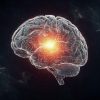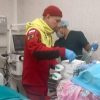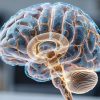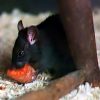
MOSCOW, November 15–. Russian scientists have learned to predict how this or that anti-aging drug will behave on the skin of a particular person. At the Tyumen Medical University (TMU), together with the Tyumen Scientific Center of the Russian Academy of Sciences and the Center for Sports Technologies of the University of Middle Sweden, a methodology was developed for quantitative and qualitative assessment of the rejuvenation potential of various compounds. The results were published in the International Journal of Molecular Sciences.
As Professor Yuri Sukhovey, the head of the project, explained in a conversation with him, most cosmetic anti-aging preparations are designed to force the fibroblasts of the connective tissue of the dermis to produce more hyaluronic acid, collagen and elastin, which keep the skin toned.
According to him, in the pharmaceutical market there are a huge number of companies specializing in beauty injections. Often dietary supplements are added to hyaluronic acid to enhance the effect of the drug. Meanwhile, a patient who wants to resort to anti-aging cosmetology does not know for sure how effectively this or that anti-aging injection will work on his own fibroblasts.
During the study, Tyumen scientists conducted experiments using a whole range of drugs for biorevitalization procedures.
“The results obtained made it possible to formulate the basic concepts of the cellular approach for quantitative assessment of the aging of the cell population and maintaining the number of young cells,” noted Elena Kostolomova, Associate Professor of the Department of Microbiology of TMU.
She added that the testing procedure includes analysis by flow cytometry ( research of single biological objects).
In practice, the new method assumes that the patient comes to the clinic, a millimeter piece of biopsy is excised from him (skin is taken, as a rule, from the buttock to minimize trauma), the sample is delivered to the laboratory and fibroblasts are isolated. Then the fibroblasts are forced to grow and the drug that the patient is going to inject into the face for the purpose of rejuvenation is added to them.
The result, which indicates the potential effectiveness of the drug, comes in two weeks. In addition, according to Elena Kostolomova, several drugs can be tested at once.
“Take a whole line and see which of the drugs will force cells to synthesize collagen and elastin more efficiently, which will be worse, and which will generally have a cytotoxic effect,” she said.
According to scientists, this method can be successful used in screening natural compounds to select those that have promising anti-aging and anti-aging potential.
“The cell-based strategy has certain advantages over in vivo studies: they are faster and do not have many ethical and safety concerns,” noted Associate Professor of the Department of Microbiology. However, she added that the proposed methodology for assessing age is quite general and can be used to quantify the anti-aging and anti-aging potential of various types of interventions.
























































Свежие комментарии